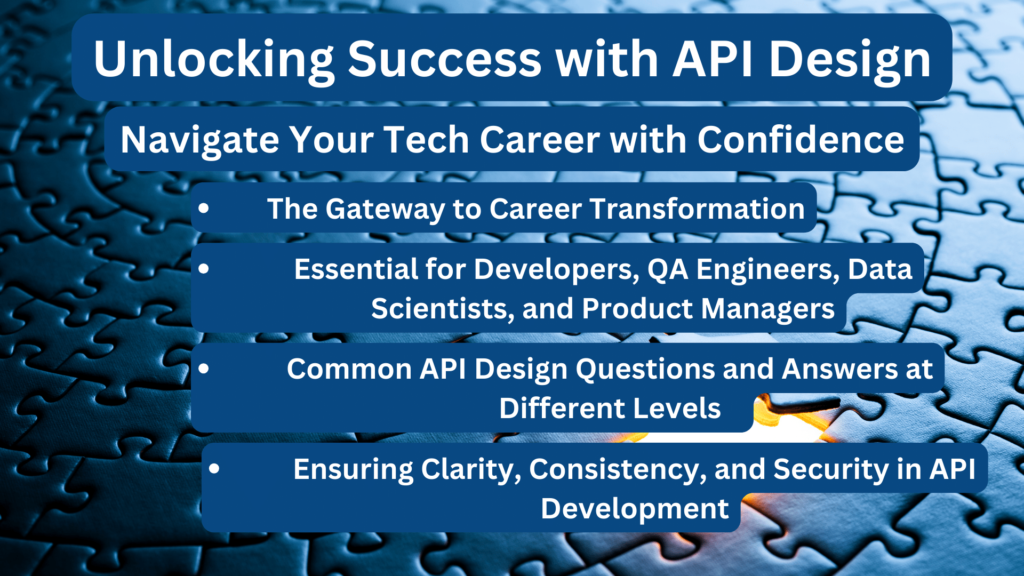In today’s rapidly evolving tech landscape, being part of an API-first organization can transform your career. Whether you’re a developer, QA engineer, data scientist, or technical product manager, grasping API design is undeniably essential for achieving success. Here, we’ve compiled common questions at different levels to help you rock your interviews and ace the process.

Beginner-Level Questions and Answers:
What is API design?
API design is about making thoughtful decisions on how different software parts interact and share data, usually documented in formats like OpenAPI or AsyncAPI.
What is API-first design?
It means creating APIs as the foundation of your application, ensuring seamless integration and collaboration between components.
Why are APIs important in software development?
APIs allow different software parts to communicate and share data efficiently, boosting interoperability and promoting user-friendly experiences.
What is a REST API?
A REST API follows principles for building scalable and flexible systems that exchange data over a network using standardized HTTP methods.
What are the components of an HTTP request?
Methods, URLs, headers, and bodies are part of the HTTP request. They work together to facilitate smooth communication between clients and servers.
What are the components of an HTTP response?
HTTP responses include status codes, headers, and bodies, providing feedback from servers to clients.
Intermediate-Level Questions and Answers:
What are the key principles of good API design?
Good API design prioritizes user needs, clarity, consistency, and backward compatibility, ensuring usability and evolution.
How do you ensure consistent API design?
Establish clear design guidelines, conduct reviews, and use tools for validation and documentation to maintain consistency.
How do you handle errors and exceptions in API responses?
Handle errors with meaningful status codes and descriptions, providing comprehensive feedback for client and server errors.
What is pagination, and how do you design it?
Pagination divides large data into manageable chunks, using cursor-based or index-based methods for efficient navigation.
What’s the difference between REST and RESTful?
RESTful describes APIs adhering to REST principles, promoting clarity, flexibility, and scalability.
Advanced-Level Questions and Answers:
What is the process of designing an API from scratch?
Define goals, scope, and requirements, create a clear interface, and gather feedback for continuous improvement.
What are some best practices for RESTful API design?
Design resource paths, use standard HTTP methods, return meaningful status codes, and ensure cacheability and statelessness.
How do you ensure security in API design?
Evaluate necessity, segregate sensitive data, implement authentication and authorization, and provide clear access controls and documentation.
Conclusion:
In the modern software development realm, API design holds a pivotal role. Whether you’re involved in crafting APIs or leveraging existing ones, understanding the fundamental principles and embracing best practices is essential for achieving success across a diverse range of tech roles.

